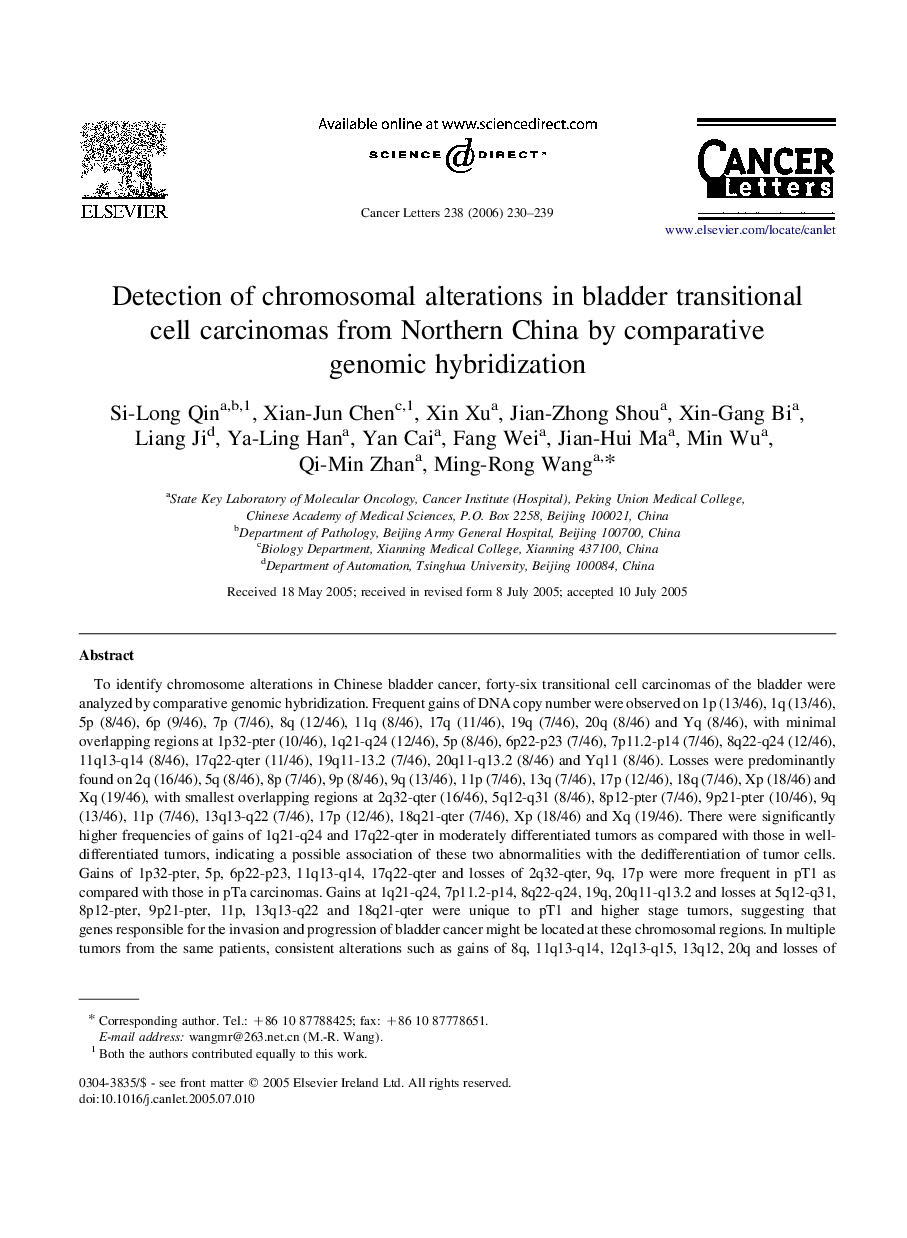| Article ID | Journal | Published Year | Pages | File Type |
|---|---|---|---|---|
| 2115957 | Cancer Letters | 2006 | 10 Pages |
To identify chromosome alterations in Chinese bladder cancer, forty-six transitional cell carcinomas of the bladder were analyzed by comparative genomic hybridization. Frequent gains of DNA copy number were observed on 1p (13/46), 1q (13/46), 5p (8/46), 6p (9/46), 7p (7/46), 8q (12/46), 11q (8/46), 17q (11/46), 19q (7/46), 20q (8/46) and Yq (8/46), with minimal overlapping regions at 1p32-pter (10/46), 1q21-q24 (12/46), 5p (8/46), 6p22-p23 (7/46), 7p11.2-p14 (7/46), 8q22-q24 (12/46), 11q13-q14 (8/46), 17q22-qter (11/46), 19q11-13.2 (7/46), 20q11-q13.2 (8/46) and Yq11 (8/46). Losses were predominantly found on 2q (16/46), 5q (8/46), 8p (7/46), 9p (8/46), 9q (13/46), 11p (7/46), 13q (7/46), 17p (12/46), 18q (7/46), Xp (18/46) and Xq (19/46), with smallest overlapping regions at 2q32-qter (16/46), 5q12-q31 (8/46), 8p12-pter (7/46), 9p21-pter (10/46), 9q (13/46), 11p (7/46), 13q13-q22 (7/46), 17p (12/46), 18q21-qter (7/46), Xp (18/46) and Xq (19/46). There were significantly higher frequencies of gains of 1q21-q24 and 17q22-qter in moderately differentiated tumors as compared with those in well-differentiated tumors, indicating a possible association of these two abnormalities with the dedifferentiation of tumor cells. Gains of 1p32-pter, 5p, 6p22-p23, 11q13-q14, 17q22-qter and losses of 2q32-qter, 9q, 17p were more frequent in pT1 as compared with those in pTa carcinomas. Gains at 1q21-q24, 7p11.2-p14, 8q22-q24, 19q, 20q11-q13.2 and losses at 5q12-q31, 8p12-pter, 9p21-pter, 11p, 13q13-q22 and 18q21-qter were unique to pT1 and higher stage tumors, suggesting that genes responsible for the invasion and progression of bladder cancer might be located at these chromosomal regions. In multiple tumors from the same patients, consistent alterations such as gains of 8q, 11q13-q14, 12q13-q15, 13q12, 20q and losses of 2q32-qter, 8p, 9, 11p, 11q21-qter, 13q13-qter, X were detected. These abnormalities were possibly earlier events, which might play a critical role during the genesis of the tumors. Further detailed studies to the recurrent aberration regions may lead to the identification of oncogenes and tumor suppressor genes involved in the development and progression of Chinese bladder cancer.
